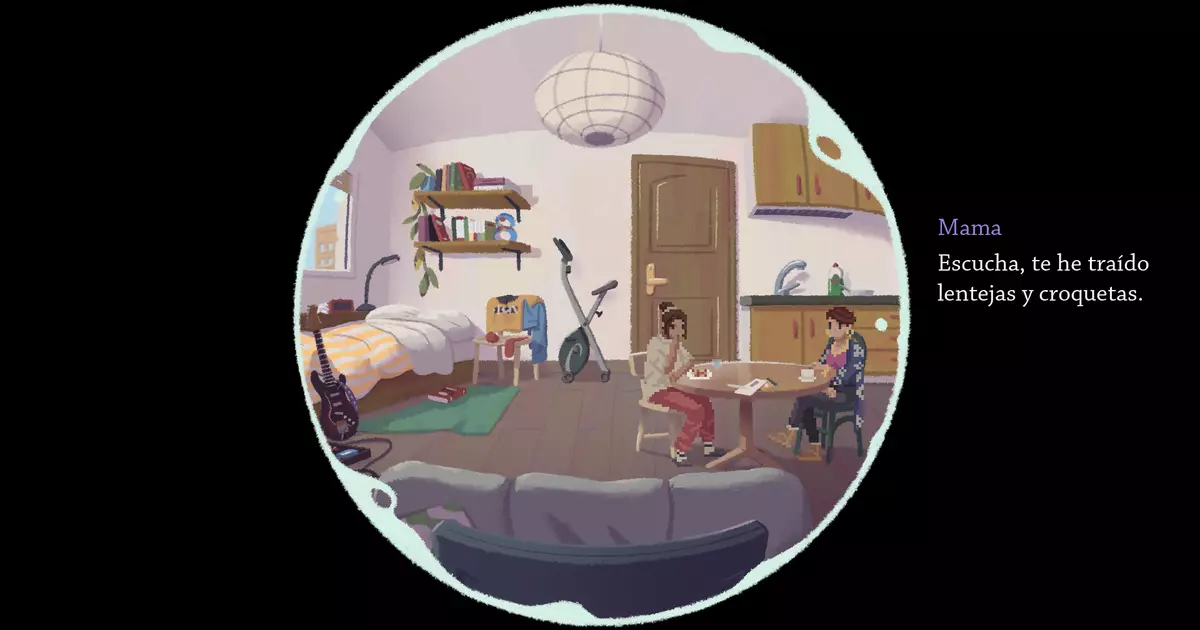In a gaming landscape often dominated by action-packed adventures and intricate plotlines, “Vendrán Las Aves” defies convention with its contemplative approach to a deeply human theme: burnout recovery. Developed by the talented trio of Francisco Riolobos, Chuso Montero, and Deconstructeam, this game encapsulates a meditative experience that paradoxically reflects the complexities of modern life while offering gamers an opportunity for emotional catharsis.
At its core, “Vendrán Las Aves” functions as a poignant representation of life’s mundane yet significant moments. Styled as a “slice of life tamagotchi,” the game is set within the parameters of a snowglobe-like perspective, capturing the familiar confines of a one-room apartment. Players find themselves supporting a character recently liberated from a soul-crushing job—someone whose spirit is visibly deflated yet desperately yearning to rediscover joy, embodied in the impulsive purchase of a guitar.
The essence of the gameplay revolves around managing the character’s limited energy each day. Players must allocate this energy among various activities—eating, watching television, and even mundane chores like laundry. Each choice carries weight, influencing future states of morale and ensuring that the journey toward emotional healing feels tangible. This design decision cleverly mirrors real-life decision-making processes, where days blend into one another, each filled with moments of both motivation and lethargy.
“Vendrán Las Aves” resonates deeply with anyone who has encountered the paralyzing grip of burnout. For many, the game evokes feelings of emptiness and restlessness while introducing a stakes-driven approach to seemingly trivial tasks. It serves as a mirror reflecting our battles with exhaustion and the nagging pressure of a world that continues to spin outside our doors. Such representations are crucial, as they democratize the experience of mental health struggles, making it clear that we’re not isolated in our struggles.
Moreover, the game effortlessly conveys an intrinsic message about human connection—illustrating the profound impact that social interactions can have on well-being. When the character’s mother arrives with a Tupperware meal, it offers a critical reminder to players: sometimes, reaching out or accepting help can fuel our journey forward, allowing us to save precious energy for activities that promote recovery.
While “Vendrán Las Aves” recognizes individual experiences with burnout, it doesn’t shy away from alluding to systemic issues surrounding work environments. The dialogue occasionally hints at external pressures contributing to the character’s state of despair, underlining the idea that burnout is often a structural phenomenon rather than strictly personal. This layered approach to storytelling acknowledges the complex interplay between individual agency and societal expectations.
The game concludes on a hopeful note, yet it shuns a pristine resolution—reflecting the tumultuous nature of recovery. Such an ending invites players to carry forward the spirit of resilience rather than presenting a neatly packaged solution, encapsulating the reality that some struggles simply cannot be tied off with a bow.
What sets “Vendrán Las Aves” apart is its representation of mental health within the medium of gaming. While the game employs a simplified point system akin to a tamagotchi, it operates on a deeper level akin to “Depression Quest,” where player experiences are as significant as objectives. Although inherently different from caring for virtual pets, this comparison raises questions about emotional support in our lives and how we assign value to those experiences.
In a gaming environment often characterized by action and escapism, “Vendrán Las Aves” invites players to pause, reflect, and engage with their own emotional journeys. It subtly nudges us toward awareness, urging us to embrace our vulnerabilities while reminding us that healing is neither linear nor confined to the realm of gaming.
Ultimately, “Vendrán Las Aves” is more than a game—it’s an empathetic exploration of adversity, hope, and the intricate human experience. For anyone grappling with burnout, it serves as an engaging companion, gently steering them toward recognizing their struggles and finding solace in community. Though it may not offer clinical guidance, it opens a dialogue about resilience, connection, and the simple beauty of rediscovering light amid darkness.


Leave a Reply